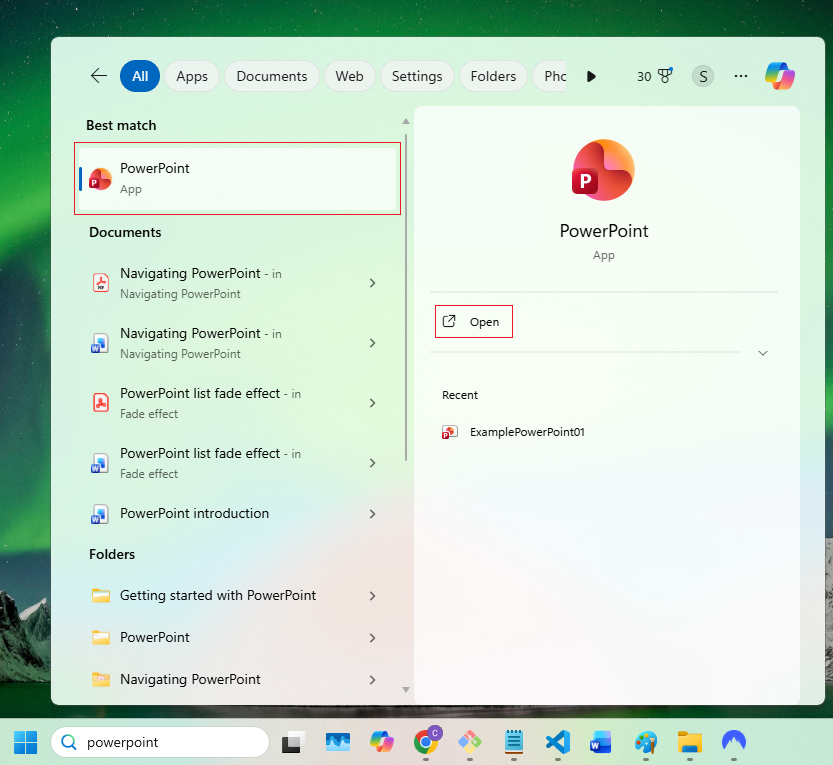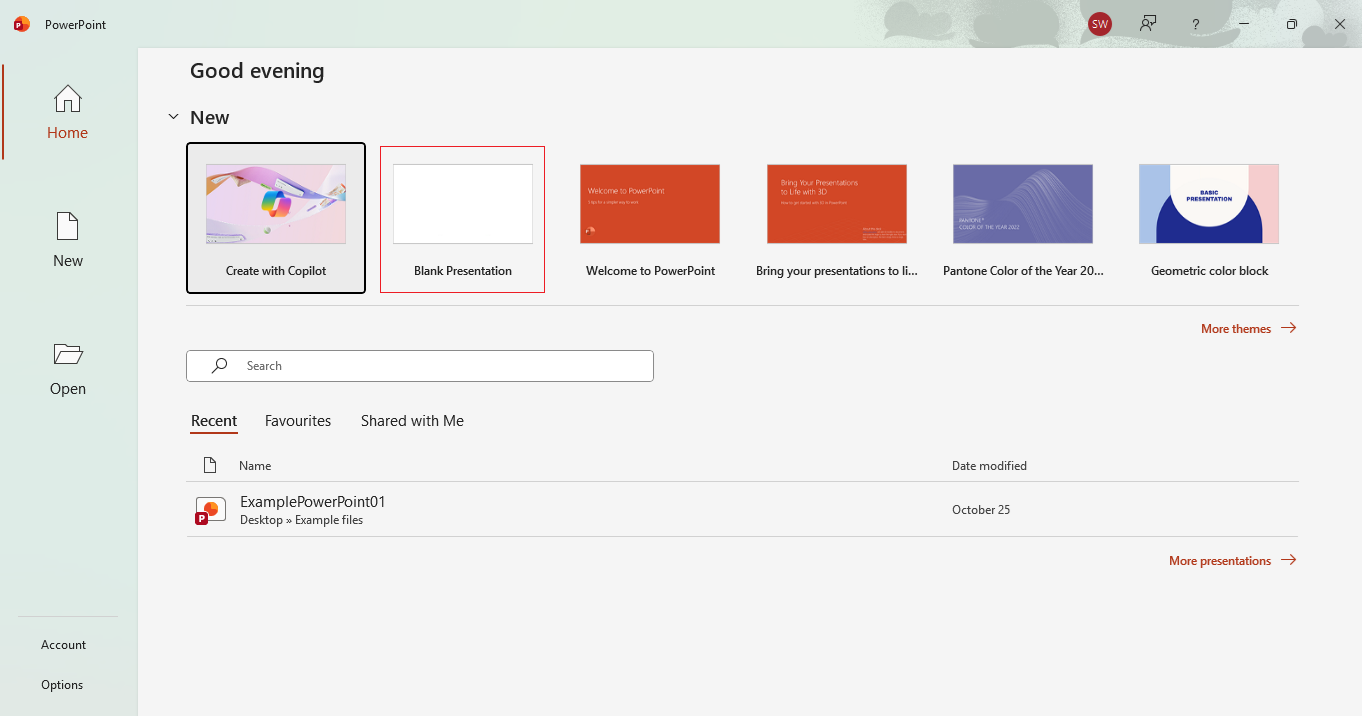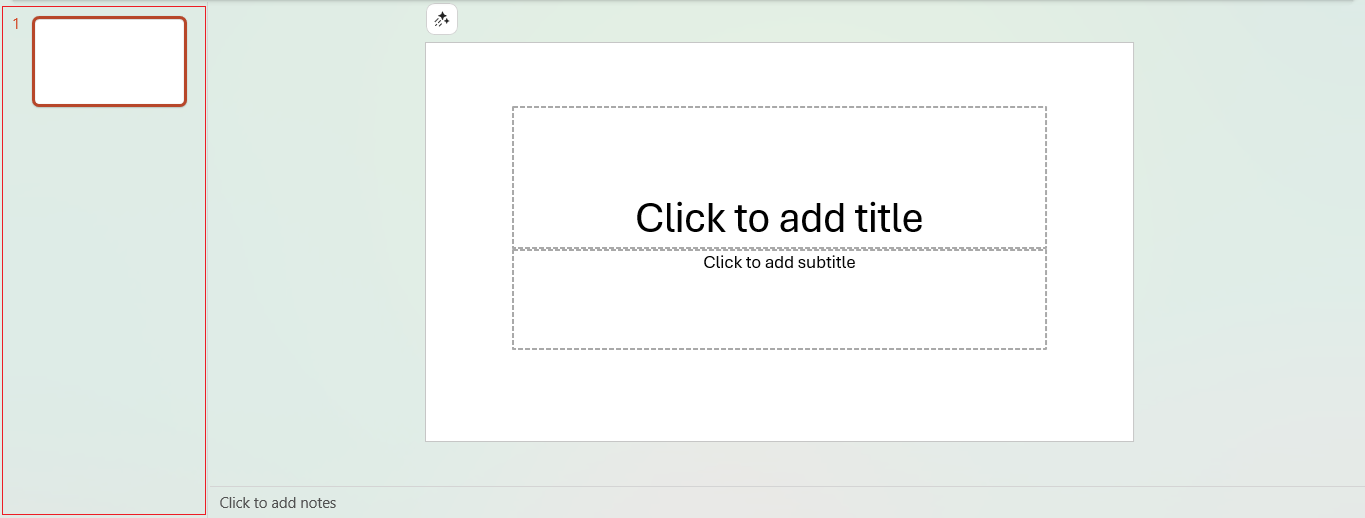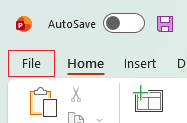Getting started with Microsoft Powerpoint
Microsoft Powerpoint is slideshow presentation application used worldwide for professional and educational presentation It comes as part of the Microsoft Office suite, a package of several Microsoft applications like PowerPoint for PowerPoint processing, Outlook for emails and Excel for spreadsheets.
If you're new to Microsoft Powerpoint ('Powerpoint' for short, slideshow presentations made are commonly just referred to as 'powerpoints' as well) this article starts from the ground up. In this article we'll explore:
- What version of Powerpoint do I have?
- Opening Microsoft Powerpoint app
- Create a new PowerPoint presentation
- Opening an existing Powerpoint file
- The main interface
- Closing a powerpoint
- Closing the app
What version of Powerpoint do I have?
| PowerPoint version | Description |
|---|---|
| PowerPoint for Microsoft 365 | A subscription-based version with continuous updates and cloud integration. It includes premium features like Designer (AI slide layouts), morph transitions, and real-time collaboration. |
| PowerPoint 2021 | One-time purchase version included in Office 2021 suite, doesn't include continuous updates. |
| PowerPoint 2019 | Predecessor to PowerPoint 2021, also a one-time purchase. |
| PowerPoint 2016 / 2013 / 2010 | Older standalone versions with fewer features and no cloud sync. |
| PowerPoint Online | Free web-based version with basic features, accessible via your web browser. Supports basic slide editing and collaboration, but lacks advanced features like Slide Master editing. |
| PowerPoint for Mac | Mac-specific versions released alongside Windows editions. Some advanced features (e.g., certain add-ins or shortcut customizations) may differ. |
| PowerPoint Mobile | A lightweight version of PowerPoint for mobile devices, optimized for touch, viewing and light editing. Advanced features are limited. |
To check what version you have try the following:
- Desktop app (Windows or Mac) – Open PowerrPoint, go to File > Account (or Help in older versions). Look under Product Information or click About PowerPoint. You’ll see something like Microsoft 365 Apps for enterprise, PowerPoint 2021, or PowerPoint 2016.
-
In a web browser – If you're using PowerPoint in a browser it’s likely the free PowerPoint for the web. Confirm by clicking your profile icon > Settings > About. If it says 'PowerPoint for the web' then you’re on the free version.
If you're accessing PowerPoint through a Microsoft 365 subscription you may use premium features enabled in the browser.
- Mobile (iOS/Android) – If you're using the PowerPoint app on a phone or tablet you're using PowerPoint Mobile. Tap your profile icon or settings gear, then look for About to see version details.
Opening Microsoft Powerpoint app
To find the PowerPoint app, search on the taskbar:

This brings up two buttons to open the application with:

Tip: Once you've opened the app, right click on the app icon and select Pin to taskbar from the menu. Pinning the Word app to the taskbar will make it stay there after you close it:

Create a new PowerPoint presentation
When the PowerPoint app loads up you get the screen shown below. Click Blank Presentation up the top to get started.

Opening an existing Powerpoint file
PowerPoint files will have the PowerPoint app icon. The Microsoft Office icons have changed over the years with the latest revamp happening in 2025, so depending on what version of PowerPoint you have they'll look like one of these below. For Mac users icons might looks like this.
![]()
If you have PowerPoint document or template file to work from you don't need to open the PowerPoint app first. Simply double click on the file icon (or left click it to select it and press Enter) and it will open in PowerPoint. File icons look like this depending on the folder view:


The main interface
This is the main interface of the PowerPoint app. We'll break it down in sections top to bottom.

Quick Access Toolbar
At the very top of the app is the Quick Access Toolbar has some options that are always available; on the left are options to save, undo, redo and view the presentation; in the centre is a search bar to search for tools and options; on the right are options to minimise screen, maximise screen and close the application. If you're using Microsoft Office 365 then you'll see a toggle for Autosave to the far left as well.

Tip: Hover over the maximise button and you'll see some 'snap' feature options to display multiple windows in various ways on screen.

Ribbon Interface
Tabs like Home, Insert, Design, and Animations organise tools.

Slides Pane
Shows the order of your slides and allows you to add, delete, cut, copy and paste them.

Slide canvas
The main area where you design and edit each slide and everything on it. Only content on the white area appears in the presentation.

Status bar
The bar at the bottom of the window shows details about the PowerPoint presentation such as the slide number, total slides, current language setting, accessibility, notes, view options and the zoom tool.

Closing a powerpoint
You can close the current document but still keep the Word application open by clicking File > Close:


Closing the app
You can close PowerPoint by pressing the red ✖ button in the far right corner on the Quick Access Toolbar. If you have made any unsaved edits PowerPoint will prompt you to save before closing.
Where to now?
Now you know how to get set up with the PowerPoint and understand its interface, try some of these articles depending on what you need:
- How to save
- The difference between presentations and templates
- How to insert text
- How to insert images and graphic visuals
- How to change the formatting (look) of text
Otherwise feel free to use the side menu or type what you're after in the search bar.